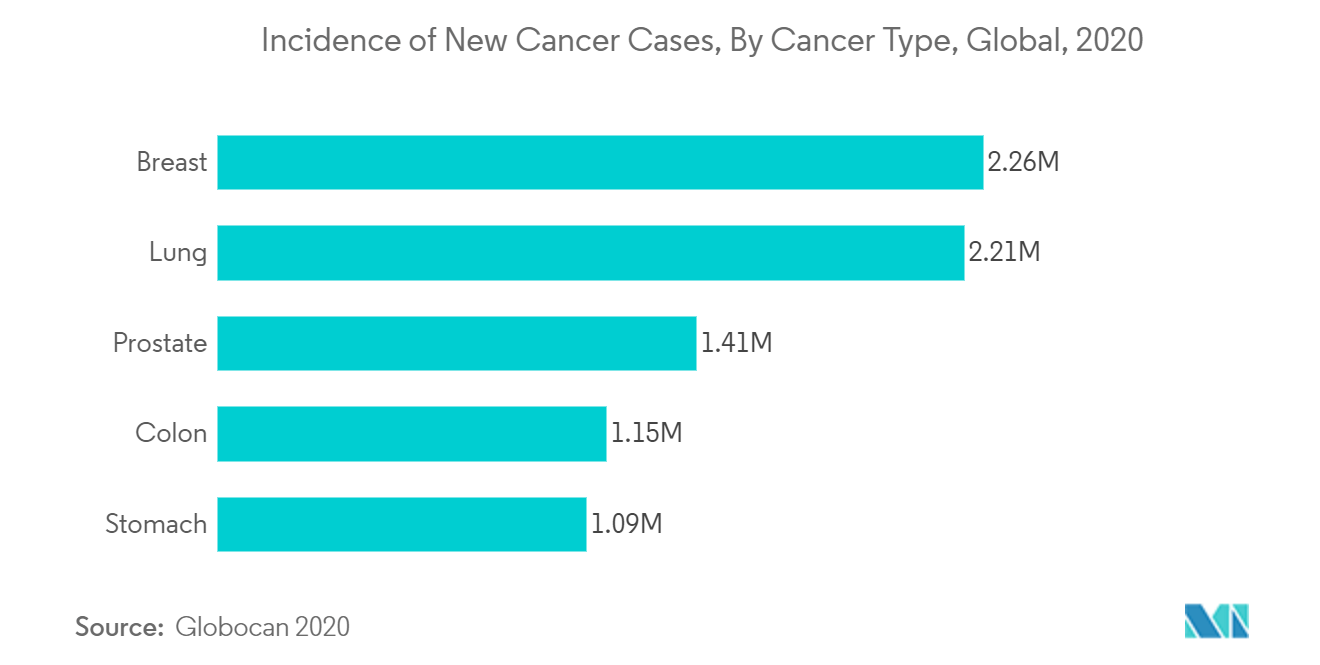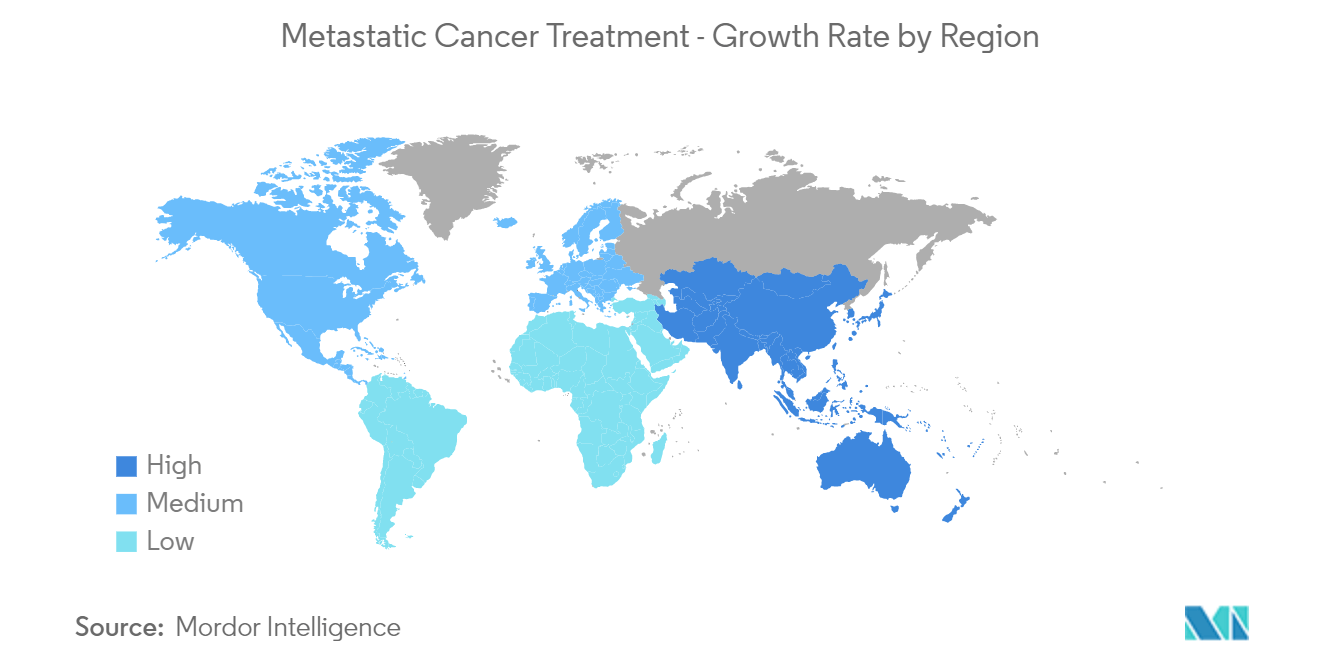Market Trends of Global Metastatic Cancer Treatment Industry
This section covers the major market trends shaping the Metastatic Cancer Treatment Market according to our research experts:
Chemotherapy Segment is Expected to Witness Growth Over the Forecast Period
The chemotherapy segment is expected to register a significant growth rate owing to factors such as the surge in research and development of chemotherapy medicines specifically for metastatic cancers and the increasing adoption of chemotherapy among the patient population.
For instance, a report titled, "Cancer Treatment and Survivorship Facts & Figures" published by the American Cancer Society in 2020 stated that 56% of women diagnosed with metastatic breast disease (stage IV) typically receive radiation and chemotherapy without surgery. As per the same source stated above, chemotherapy is the most common treatment for metastatic colon or rectal cancer, and 66% of stage III colon cancer patients are treated with adjuvant chemotherapy. The standard treatment for acute myeloid leukemia is two phases of chemotherapy. Most diffuse large B-cell lymphoma (DLBCL) patients receive chemotherapy (82%), either with (43%) or without (39%) immunotherapy. Moreover, the same source also stated that only 18% of patients with stage III Non-Small Cell Lung Carcinoma (NSCLC) undergo surgery while most (63%) are treated with chemotherapy and/or radiation.
Additionally, when an estrogen-receptor-positive tumor becomes resistant to hormonal treatments like tamoxifen or aromatase inhibitors, chemotherapy is typically advised as the first-line metastatic cancer treatment. Chemotherapy is recommended for patients who are estrogen receptor-negative and have cancers that are HER2 positive, along with targeted therapy like Herceptin. Moreover, for malignancies that are HER2 and estrogen receptor-negative (triple-negative breast cancers), chemotherapy is one of the best suitable treatments for these individuals. Such factors are likely to boost the adoption of chemotherapy treatment among cancer patients.
Furthermore, in December 2020, SWOG Cancer Research Network researchers demonstrated that a triple-drug combination of irinotecan, cetuximab, and vemurafenib is a more potent tumor combatant and keeps people with metastatic colon cancer disease-free for a significantly longer period of time than patients treated with irinotecan and cetuximab. SWOG Cancer Research Network is a cancer clinical trials group funded by the National Cancer Institute (NCI), part of the National Institutes of Health.
Hence, owing to the aforesaid factors, the chemotherapy segment is expected to project significant growth over the forecast period.

North America is Expected to Dominate the Metastatic Cancer Treatment Market
North America is expected to hold a major share of the market owing to factors such as the high prevalence of metastatic cancer, a surge in research and development, identification of new drugs to treat metastatic cancer, and the availability of advanced diagnosis infrastructure.
According to the American Institute of Cancer Research, in 2020, metastatic cancer accounts for up to 90% of cancer deaths each year in the United States, and 6% of women were diagnosed with metastatic breast cancer in the first diagnosis. According to MetaVivor, a government-funded Metastatic Breast Cancer Research, Support, and Awareness Group, in 2020 stated that 1 in 8 women was diagnosed with breast cancer in the United States, and 1 in 3 of those would become metastatic. The same source further stated that among American women and men, there were 268,600 new cases of advanced breast cancer and 41,760 breast cancer deaths. Of those deaths, nearly 97-99% were from metastatic breast cancer.
Moreover, growing strategic developments such as therapy launches, acquisitions, and mergers among prominent players are anticipated to drive market growth. For instance, in August 2021, GSK received US-FDA accelerated approval for JEMPERLI (dostarlimab-gxly) for adult patients with mismatch repair-deficient recurrent or advanced solid tumors. Similarly, according to the small clinical trial, conducted by the Memorial Sloan Kettering Cancer Center, New York, 18 rectal cancer patients who had mismatch repair deficiency took Dostarlimab for around six months, which resulted in the complete eradication of tumors without any additional treatment in all 100 of them. The drug is still being studied, and the trial is limited to patients with a specific type of rectal cancer, which accounts for about 4 to 5 percent of all rectal cancers.
Additionally, in March 2022, the United States Food and Drug Administration approved Pluvicto for the treatment of adult patients with advanced cancer called prostate-specific membrane antigen-positive metastatic castration-resistant prostate cancer (PSMA-positive mCRPC) that has spread to other parts of the body.
Therefore, owing to the aforementioned factors, the growth of the studied market is anticipated in the North American region.

